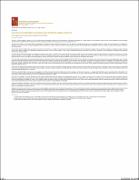| dc.description.abstract | The war in northern Uganda is ending, or is it? The official Government position is that the war is practically over. And they have evidence for it. Rebel soldiers are surrendering in droves, and the Lord’s Resistance Army (LRA) leader Joseph Kony has retreated far into the Sudan with his army, having been scattered into small groups, which are constantly on the run. Had history not taught us to be careful about such declarations, Ugandans would be celebrating the defeat of the LRA, given the unspeakable atrocities LRA has especially meted on children. But the declaration of a near-defeat or elimination of Kony and his LRA has been propagated by the Government for 18 years. And yet, somehow, the much-desired end of the LRA has always failed to materialize. Still, there is cause for optimism about the end of the war in the north, this time. But the end of the LRA rebellion does not mean the end of wars in the north or in Uganda. The basic factors that start and propel wars in Africa are still intact in Uganda. They could still be re-ignited or could flare up again. The initial cause of the northern rebellion that subsequently coalesced around the LRA was a tribal revenge. It was to defy the National Resistance Army (NRA), who the north perceived as being dominated by Baganda and Banyankole (southerners), seeking revenge. The Acholi say the NRA wrecked pillage in Acholi and (and generally in the north) in revenge for the atrocities carried out in the early 1980s by the Obote Government, which the NRA branded as a Government of northerners. The NRA rebellion took place in Luwero Triangle, which straddles a wide area in Buganda and other parts of southern Uganda. The beginning of the rebellion in the north was therefore not about a political comeback of northerners, although this would have been a bonus. It was about revenge and defiance. However, the war lost its original revenge-and-defiance causes, and begun to be fueled by other factors. | en_US |



